Embarking on a journey through China is like stepping into a realm where ancient history and modern innovation seamlessly converge.
From the iconic Great Wall to the bustling metropolis of Shanghai to the serene water towns of Guilin, China offers a vast array of unique experiences you will not find in any other country.
I was fortunate enough to spend an entire year in China (the best year of my life) and had the opportunity to explore so many incredible places.
Read on to learn about China’s bucket list destinations, the best itineraries, safety measures, and more!
Top Destinations to Visit in China
These are some of my favorite places I visited in China and a list of things you can do there!
Beijing:
- Explore the Forbidden City and Tiananmen Square.
- Walk on the historic Great Wall of China (Mutianyu or Badaling sections).
- Visit the serene Temple of Heaven.
- Wander through the vibrant Nanluoguxiang Hutong.
Shanghai:
- Admire the skyline from the Oriental Pearl Tower.
- Stroll along the historic Bund with colonial-era buildings.
- Explore the traditional Yuyuan Garden and bazaar.
- Visit the Shanghai Museum for ancient artifacts.
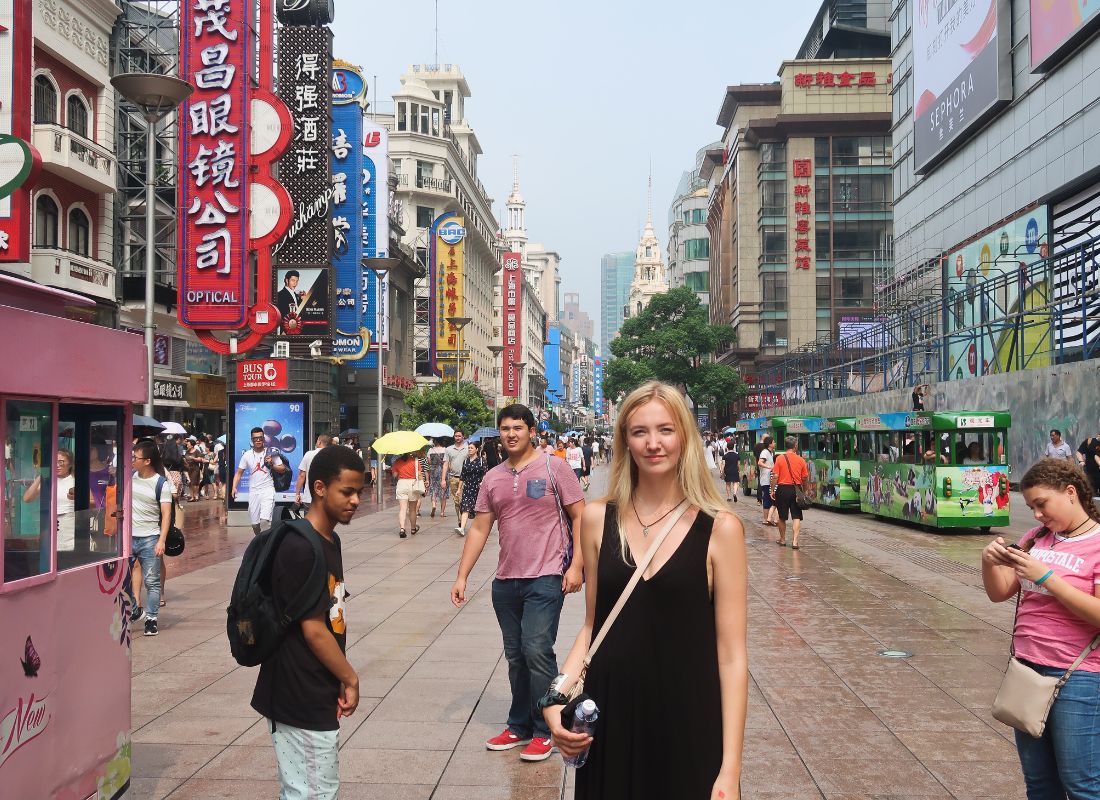
Shanghai, China
Xi’an:
- Marvel at the Terracotta Army Museum.
- Walk or bike on the ancient City Wall.
- Explore the Muslim Quarter and try local delicacies.
- Visit the Big Wild Goose Pagoda.
Guilin and Yangshuo:
- Take a scenic cruise on the Li River.
- Explore the picturesque landscapes and karst formations.
- Visit Reed Flute Cave in Guilin.
- Experience the charm of West Street in Yangshuo.

Yangshuo, China
Chengdu:
- Visit the Chengdu Research Base of Giant Panda Breeding.
- Explore the historic Jinli Street.
- Enjoy spicy Sichuan cuisine.
- Experience traditional Sichuan opera.
Hangzhou:
- Relax by the serene West Lake.
- Explore the historic Hefang Street.
- Visit the Leifeng Pagoda for panoramic views.
- Learn about tea culture at the Tea Museum.
Lijiang:
- Wander through the well-preserved Lijiang Old Town.
- Visit the Black Dragon Pool Park.
- Explore the nearby Jade Dragon Snow Mountain.
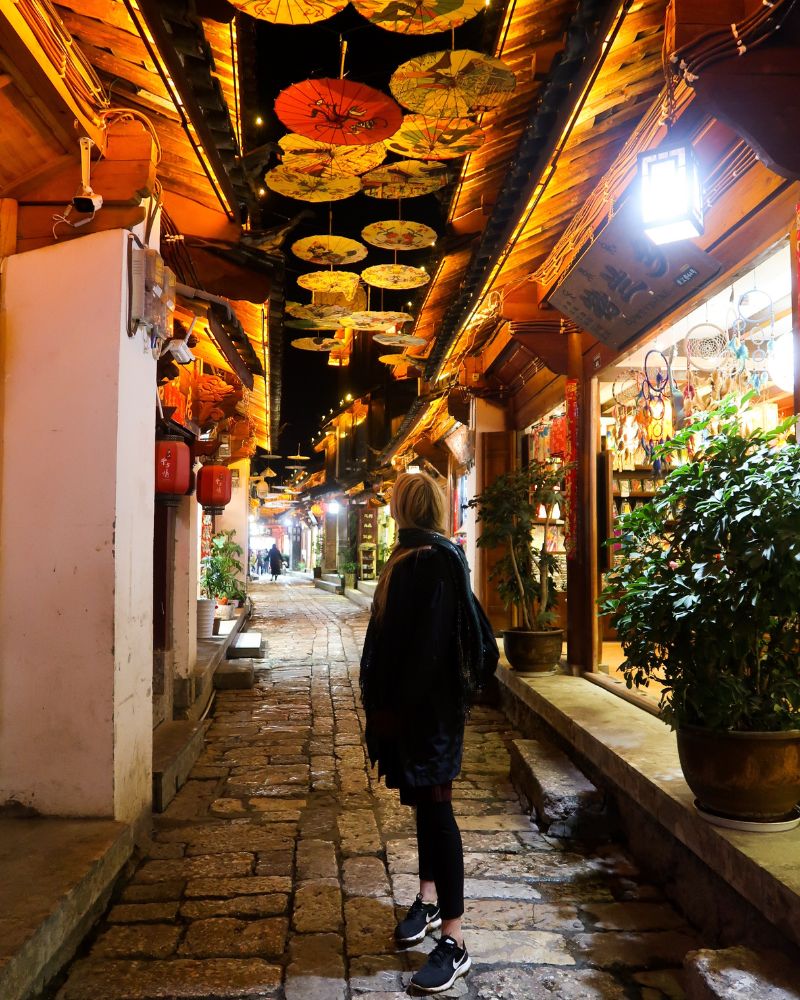
Beautiful Lijiang
Zhangjiajie:
- Witness the stunning sandstone pillars in Zhangjiajie National Forest Park.
- Walk on the glass-bottomed bridge at Tianmen Mountain.
- Explore the Avatar Hallelujah Mountains, inspired by the movie.
Harbin:
- Experience the magical Harbin Ice Festival in winter.
- Visit the impressive Saint Sophia Cathedral.
- Explore the Russian-influenced architecture.
Suzhou:
- Explore classical Chinese gardens like the Humble Administrator’s Garden.
- Visit the historic Pingjiang Road.
- Experience a traditional Chinese water town like Zhujiajiao.
Yunnan Province (Kunming, Dali, Tiger Leaping Gorge):
- Marvel at the unique rock formations in Stone Forest near Kunming.
- Explore the ancient town of Dali.
- Wander through the well-preserved Lijiang Old Town.
Huangshan (Yellow Mountain):
- Hike the iconic Yellow Mountain for breathtaking views.
- Explore ancient villages like Hongcun and Xidi.
- Experience the sea of clouds at sunrise or sunset.
One Week China Itinerary
Day 1-2: Beijing – Imperial Splendors and Cultural Heritage
Morning:
- Start your journey with a visit to the iconic Tiananmen Square and the historic Forbidden City. Marvel at the imperial architecture and explore the extensive palace complex.
Afternoon:
- Head to the Temple of Heaven, a masterpiece of Ming Dynasty architecture, surrounded by beautiful gardens. Enjoy a leisurely stroll and perhaps witness locals practicing tai chi.
Evening:
- Explore the vibrant Nanluoguxiang Hutong for a taste of traditional Beijing life. Try local street food and immerse yourself in the charm of narrow alleys and courtyard homes.
Day 3-4: The Great Wall Adventure
Morning:
- Embark on a day trip to the Great Wall of China, specifically at Mutianyu or Badaling. Hike along the ancient wall, soak in the breathtaking views, and appreciate the magnitude of this architectural wonder.
Afternoon:
- Visit the Ming Tombs, the final resting place of 13 emperors from the Ming Dynasty, and explore the Sacred Way, lined with massive stone statues.
Evening:
- Return to Beijing and unwind with a Peking Duck dinner, a culinary specialty of the region.

Day 5-6: Xi’an – Ancient Capital and Terracotta Warriors
Morning:
- Fly to Xi’an and start your exploration at the Terracotta Army Museum. Witness the awe-inspiring clay soldiers and learn about the history behind this archaeological marvel.
Afternoon:
- Explore the well-preserved City Wall of Xi’an, one of the oldest and most complete city walls in China. Consider renting a bike to circle the wall for panoramic views.
Evening:
- Wander through the bustling Muslim Quarter, filled with vibrant street markets and delicious local snacks.
Day 7: Shanghai – Modern Elegance and Cultural Fusion
Morning:
- Take a flight to Shanghai and begin your day at the historic Yuyuan Garden. Admire classical Chinese architecture, stroll through the picturesque gardens, and explore the bustling bazaar nearby.
Afternoon:
- Head to the Shanghai Museum to delve into China’s ancient art and artifacts. Visit the iconic Oriental Pearl Tower for panoramic views of the city.
Evening:
- Conclude your week with a leisurely walk along the Bund, where the historic buildings on one side complement the futuristic skyline on the other. Enjoy a river cruise for a stunning night view of the city lights.
This one-week itinerary provides a glimpse into China’s rich history, natural wonders, and vibrant contemporary life. Adjustments can be made based on personal preferences and travel pace.
Two Week China Itinerary
Week 1: Classic Cultural Exploration
Day 1-3: Beijing – Imperial Treasures and Modern Marvels
Day 1:
- Begin with Tiananmen Square and the Forbidden City.
- Explore the nearby Jingshan Park for panoramic views of the Forbidden City.
Day 2:
- Visit the Temple of Heaven.
- Afternoon excursion to the Summer Palace, a serene retreat for Chinese emperors.
Day 3:
- Full-day trip to the Great Wall (Mutianyu or Badaling) and the Ming Tombs.
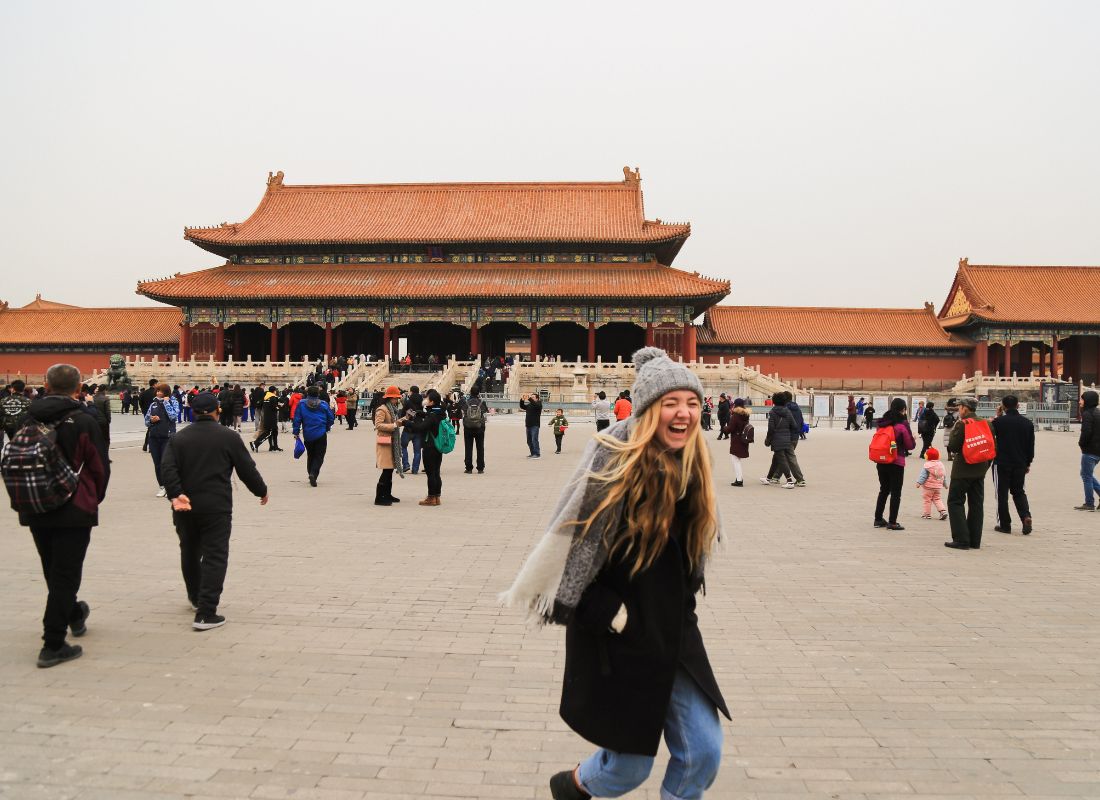
Forbidden City, Beijing
Day 4-6: Xi’an – Ancient Capital and Culinary Delights
Day 4:
- Morning flight to Xi’an.
- Explore the City Wall and the Muslim Quarter in the evening.
Day 5:
- Visit the world-renowned Terracotta Army Museum.
- Afternoon trip to the Big Wild Goose Pagoda.
Day 6:
- Day excursion to Mount Hua for stunning views and a bit of hiking adventure.
Day 7-9: Guilin and Yangshuo – Serene Landscapes
Day 7:
- Fly to Guilin and explore the picturesque Reed Flute Cave.
- Evening stroll around Shanhu Lake.
Day 8:
- Li River cruise from Guilin to Yangshuo, surrounded by stunning karst landscapes.
- Explore West Street in Yangshuo.
Day 9:
- Cycling tour or bamboo rafting in Yangshuo’s countryside.
- Return to Guilin in the evening.
Week 2: Modern Metropolises and Coastal Beauty
Day 10-12: Shanghai – The Pearl of the Orient
Day 10:
- Fly to Shanghai and visit the historic Yuyuan Garden.
- Explore the lively bazaar surrounding Yuyuan.
Day 11:
- Morning at the Shanghai Museum.
- Afternoon at the iconic Oriental Pearl Tower.
- Evening stroll along the famous Bund.
Day 12:
- Day trip to Zhujiajiao Water Town for a taste of traditional China.
- Return to Shanghai in the evening.
Day 13-14: Hangzhou – West Lake Tranquility
Day 13:
- High-speed train to Hangzhou.
- Explore the scenic West Lake and visit the Leifeng Pagoda.
Day 14:
- Morning boat ride on West Lake.
- Visit the Tea Museum and explore the historic Hefang Street.
Conclude your two-week adventure with a return to Beijing or your departure city.
This itinerary provides a balanced mix of historical exploration, natural wonders, and modern city experiences, capturing the essence of China’s diverse landscapes and rich cultural heritage.
Adjustments can be made based on personal preferences and the availability of time.
One Month China Travel Itinerary
Weeks 1-2: Historical and Cultural Marvels in the North
Day 1-4: Beijing – Imperial Wonders
- Day 1: Arrival in Beijing, rest and acclimate.
- Day 2: Explore Tiananmen Square and the Forbidden City.
- Day 3: Visit the Temple of Heaven and take a stroll in Jingshan Park.
- Day 4: Full-day excursion to the Great Wall (Mutianyu or Badaling).
Day 5-7: Xi’an – Ancient Capital and Culinary Exploration
- Day 5: Fly to Xi’an, explore the City Wall, and visit the Muslim Quarter.
- Day 6: Marvel at the Terracotta Army and visit the Big Wild Goose Pagoda.
- Day 7: Day trip to Mount Hua for hiking and breathtaking views.
Weeks 3-4: Southern Scenery and Metropolises
Day 8-10: Guilin and Yangshuo – Picturesque Landscapes
- Day 8: Fly to Guilin, explore Reed Flute Cave, and stroll around Shanhu Lake.
- Day 9: Li River cruise to Yangshuo, explore West Street.
- Day 10: Cycling tour or bamboo rafting in Yangshuo’s countryside.
Day 11-13: Shanghai – Modern Elegance and Cultural Fusion
- Day 11: Fly to Shanghai, visit Yuyuan Garden, and explore the bazaar.
- Day 12: Shanghai Museum and the Oriental Pearl Tower.
- Day 13: Day trip to Zhujiajiao Water Town for a taste of traditional China.
Day 14-17: Suzhou and Hangzhou – Classical Gardens and Tranquil Lakes
- Day 14: High-speed train to Suzhou, explore classical gardens.
- Day 15: Continue to Hangzhou, boat ride on West Lake.
- Day 16: Visit the Tea Museum and explore Hefang Street.
- Day 17: Relax and enjoy the natural beauty of Hangzhou.
Day 18-21: Chengdu – Pandas and Sichuan Cuisine
- Day 18: Fly to Chengdu, visit the Chengdu Research Base of Giant Panda Breeding.
- Day 19: Explore the vibrant Jinli Street and taste Sichuan cuisine.
- Day 20: Day trip to Leshan Giant Buddha and Emei Mountain.
- Day 21: Enjoy a traditional Sichuan opera performance.
Day 22-25: Yunnan Province – Ethnic Diversity and Natural Beauty
- Day 22: Fly to Kunming, explore the Stone Forest.
- Day 23: Visit Dali Ancient Town.
- Day 24: Explore Lijiang Old Town.
- Day 25: Relax in the picturesque Shangri-La.
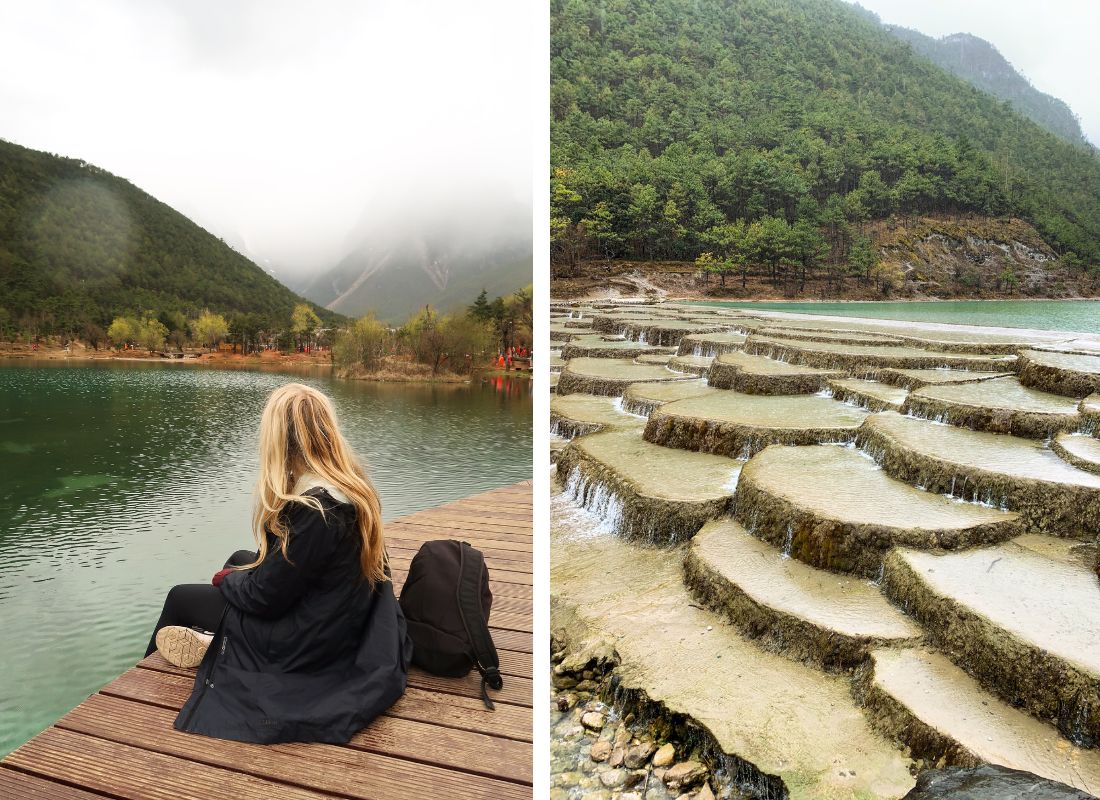
Yunnan province
Day 26-30: Beijing – Farewell and Cultural Reflection
- Day 26: Return to Beijing, visit the Summer Palace.
- Day 27: Explore the 798 Art District and modern Beijing.
- Day 28: Day trip to the Ming Tombs.
- Day 29: Relax and reflect on your journey.
- Day 30: Departure from Beijing.
Is China Safe to Visit?
Good news: China is very safe to visit. In fact, it’s one of the countries I felt the most safe in.
Of course, there are always some safety precautions you should take. Here are some tips to help ensure a safe and enjoyable trip:
Health Precautions:
- Vaccinations: Check with your healthcare provider about recommended vaccinations before traveling to China. Common vaccinations include Hepatitis A and B, typhoid, and routine immunizations.
- Food and Water Safety: I never had too many issues with food or water. However, some restaurants use MSG in their food, which I found really upsetting to my stomach. If you think it may upset your stomach, make sure to ask before you order.
- Pollution: Check the air quality levels before you travel, especially to larger cities. Local citizens often wear masks to protect their lungs during times of bad air pollution.
Personal Security:
- Pickpocketing: I never had an issue with theft in China. In fact, I found that my belongings were generally safe when left alone.
- Scams: The biggest scam you’ll find is a taxi driver overcharging you. This is easy to avoid by using the ride app Didi.
Local Laws and Customs:
- Respect Local Laws: Familiarize yourself with local laws and customs. Respect cultural norms and be mindful of local customs, especially in religious sites.
Communication:
- Language Barrier: English may not be widely spoken, especially in rural areas. Consider learning some basic Mandarin phrases or use translation apps to ease communication.
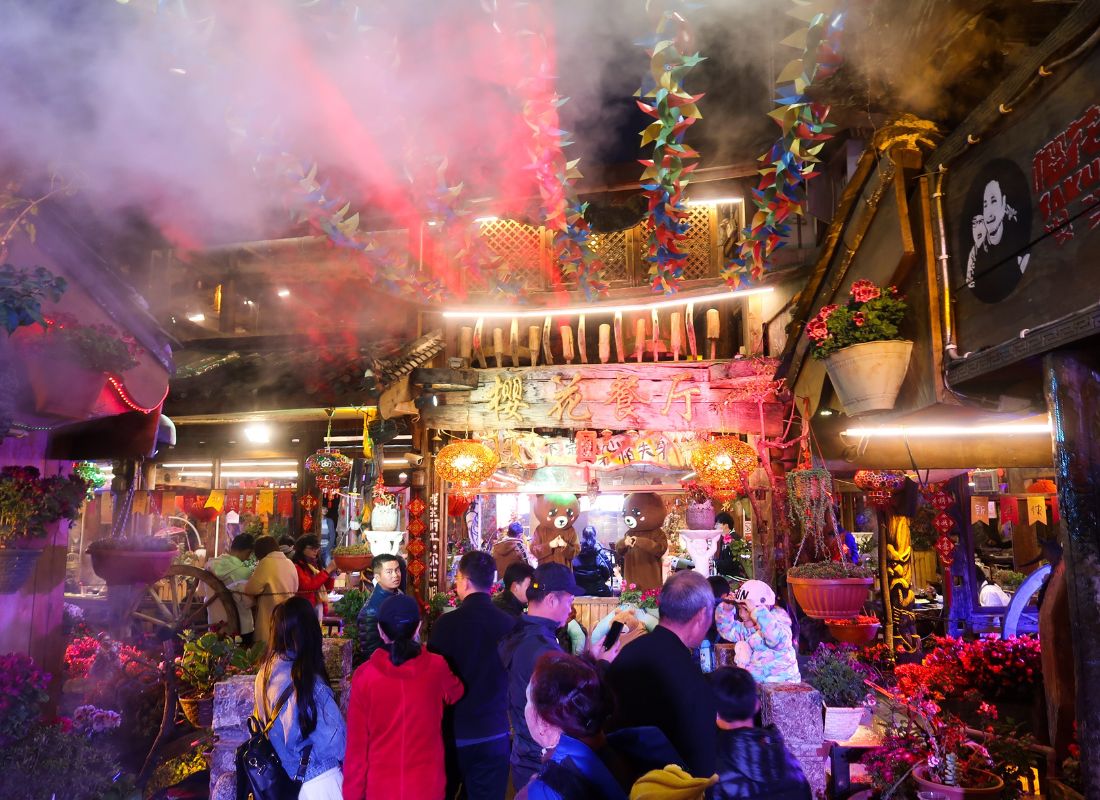
Transportation Safety:
- Public Transportation: Public transportation in China is generally safe and efficient. Be sure to know where you are going and when to get off so you don’t get lost.
Click here for a comprehensive guide to Shanghai public transportation.
- Traffic Safety: Exercise caution when crossing streets, as traffic can be hectic. Follow local pedestrian practices and use designated crosswalks. Always bike on the correct side of the road! (I got pulled over a few times haha)
Healthcare and Insurance:
- Travel Insurance: Ensure you have comprehensive travel insurance that covers medical emergencies and evacuation. Familiarize yourself with local healthcare facilities, and carry a basic first aid kit.
Internet and Cybersecurity:
- Public Wi-Fi: Use virtual private networks (VPNs) when accessing public Wi-Fi to protect your data and maintain online privacy. If you don’t use a VPN, you won’t be able to access certain websites (need that Instagram amiright?)
Natural Disasters:
- Weather Awareness: China experiences various climates, so be aware of weather conditions during your visit. Stay informed about potential natural disasters, such as typhoons or earthquakes, and follow local authorities’ guidance.
Register with Your Embassy:
- Embassy Information: Register with your embassy or consulate upon arrival. This can be helpful in case of emergencies, and you’ll receive updates on local safety conditions.
Remember that safety measures may vary by region, so always stay informed about the specific areas you plan to visit.
Overall, a combination of awareness, preparation, and respect for local customs will contribute to a safe and enjoyable journey in China.
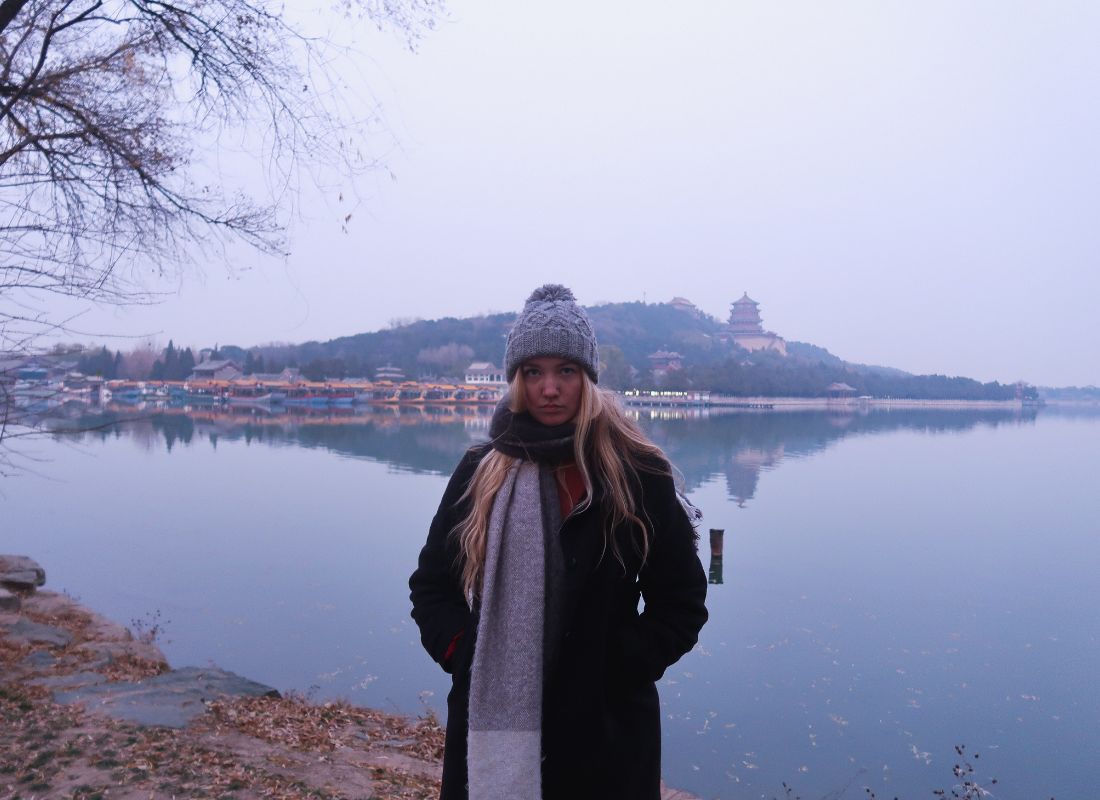
What to Pack When Traveling to China
Packing for a trip to China requires careful consideration of the diverse climates, cultural expectations, and potential activities. Here’s a comprehensive packing list to ensure you’re well-prepared for your journey:
1. Travel Documents:
- Passport and visa (if required).
- Printed copies of your itinerary, hotel reservations, and important contacts.
- International driver’s license (if planning to drive).
2. Clothing:
- Lightweight and breathable clothing for warmer regions.
- Layers for cooler evenings and higher altitudes.
- Comfortable walking shoes for city exploration and hiking.
- Swimwear (if visiting coastal areas or resorts).
- Rain jacket or umbrella, especially during the rainy season.
3. Personal Items:
- Prescription medications and a basic first aid kit.
- Travel-sized toiletries and a reusable water bottle.
- Sunscreen and insect repellent.
- Travel adapter for electronic devices.
4. Technology and Communication:
- Smartphone with a VPN installed.
- Portable charger/power bank.
- Camera or smartphone for capturing memories.
- E-reader or tablet for entertainment during travel.

5. Money and Security:
- Local currency (Chinese Yuan) and some U.S. dollars for emergencies.
- Credit/debit cards with international acceptance.
- Money belt or neck pouch for securing valuables.
- TSA-approved lock for luggage.
6. Clothing Accessories:
- Hat or cap for sun protection.
- Sunglasses.
- Lightweight scarf or shawl.
- Quick-drying towel for travel and outdoor activities.
7. Cultural Considerations:
- Modest clothing for visits to religious sites.
- Comfortable, slip-on shoes for easy removal at temples or homes.
- Small gifts from your home country for potential hosts or new friends.
8. Practical Items:
- Compact travel umbrella.
- Travel-size laundry detergent or stain remover.
- Reusable shopping bag for daily purchases.
- Ziplock bags for storing snacks or preventing spills.
9. Health and Safety:
- Basic medical kit with bandages, pain relievers, and any necessary prescription medications.
- Copy of your travel insurance information.
- Face masks and hand sanitizer (especially if traveling during flu season).
10. Language and Navigation:
- Mandarin phrasebook or translation app.
- Maps.me or a similar offline navigation app.
- Business cards from your hotel with the address written in Chinese for easy communication with taxi drivers.
11. Comfort and Leisure:
- Neck pillow for long flights or train journeys.
- Travel-sized pillowcase and sleep mask for accommodations.
- Entertainment for downtime, such as books, travel journal, or games.
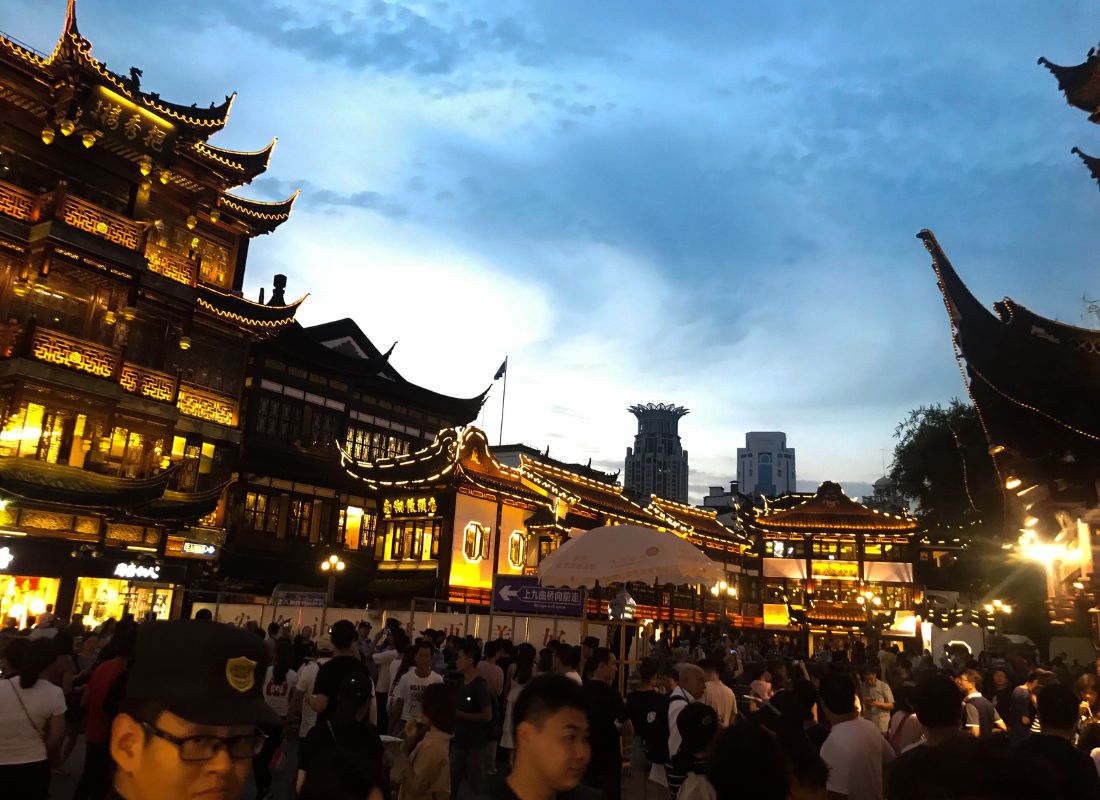
Yuyuan Gardens, Shanghai
Do Local People Speak English in China?
In China, English proficiency varies across different regions and among individuals.
While English is taught in schools, and there are efforts to promote language learning, the overall proficiency can be limited, particularly in more rural areas.
Here are some key points to consider regarding English language usage in China:
1. Urban Centers:
- In major cities like Beijing, Shanghai, Guangzhou, and Shenzhen, you can generally find people who speak English, especially in areas frequented by tourists, business professionals, and expatriates.
- Many hotels, international restaurants, and popular tourist attractions have English-speaking staff.
2. Tourism Industry:
- Tourist destinations often have English signage and information.
- Guides and employees working in the tourism industry are more likely to speak English, facilitating communication for travelers.
3. Educational Institutions:
- University students and younger generations are more likely to have some proficiency in English due to English being a compulsory subject in schools.
- In larger cities with reputable universities, you may find more English speakers among the student population.
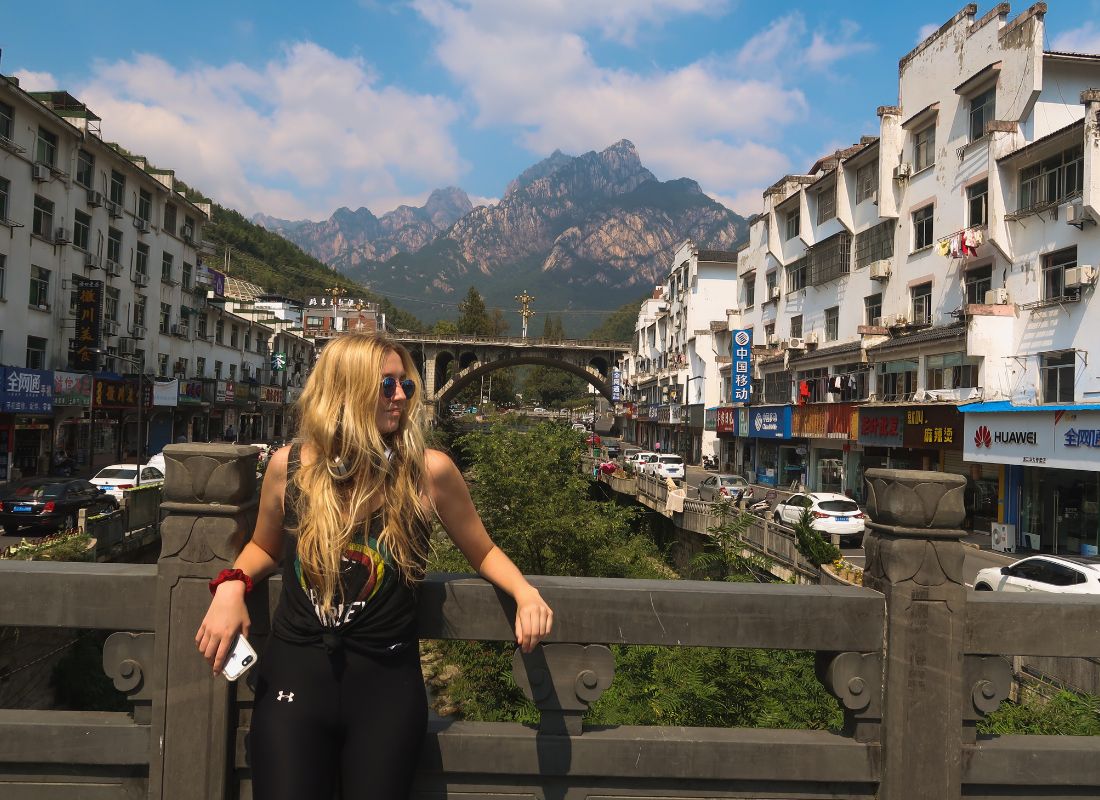
Huanghan, China
4. Rural Areas:
- In less developed and rural areas, English proficiency tends to be lower. Locals may not be comfortable communicating in English.
- It’s advisable to learn basic Mandarin phrases or use translation apps in such areas.
5. Business Environment:
- In international business hubs, English is commonly used in the workplace.
- Business professionals, especially those dealing with international clients, are likely to have a reasonable command of English.
6. Language Barriers:
- Despite efforts to promote English education, language barriers can still be significant in many parts of China.
- Learning a few basic Mandarin phrases can go a long way in bridging communication gaps and showing respect for the local culture.
7. English in Daily Life:
- While younger generations may have some proficiency in English, it might not be the primary language for everyday communication.
- Learning a bit of the local language can enhance your overall travel experience and interactions with locals.
In summary, while English is becoming more prevalent in urban and tourist-centric areas, it may not be as widely spoken in rural or less developed regions.
As a traveler, being open to cultural exchange, using translation tools, and learning some basic Mandarin phrases can enrich your experience and help you navigate language barriers more effectively.
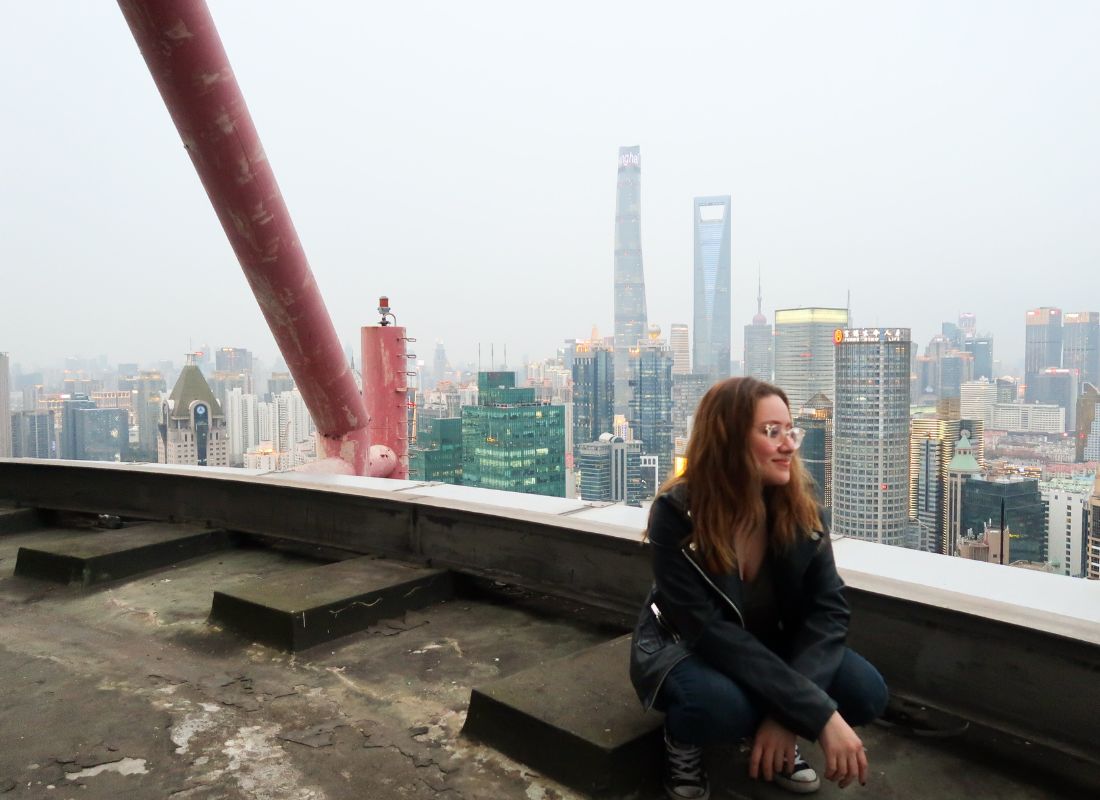
Rooftopping in Shanghai
Paying in China: Cash or Card?
When deciding whether to bring a card or cash to China, it’s wise to consider various factors, including convenience, security, and acceptance.
Here’s a breakdown to help you make an informed decision:
Bringing a Card:
1. Credit and Debit Cards:
- Major credit cards like Visa, MasterCard, and, to some extent, UnionPay, are widely accepted in urban areas, hotels, restaurants, and international retailers.
- Debit cards with a Visa or MasterCard logo can be used to withdraw cash from ATMs.
- Using cards can be convenient for large purchases, accommodation, and certain tourist attractions.
2. Mobile Payment:
- Mobile payment methods like WeChat Pay and Alipay are prevalent in China. These are often linked to local bank accounts and are widely used for everyday transactions.
- Setting up a digital wallet on your smartphone can be a convenient alternative to carrying physical cards.
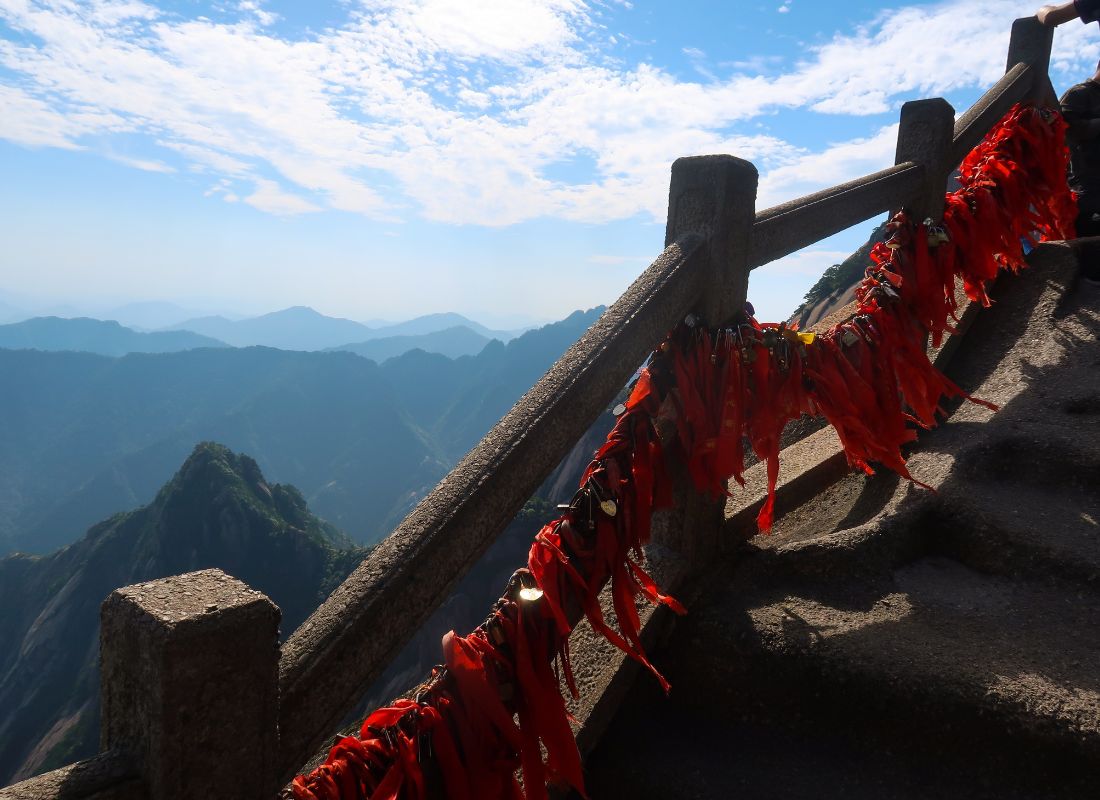
3. Security:
- Using cards can provide an added layer of security, as transactions are traceable, and most banks offer fraud protection.
- Notify your bank about your travel plans to avoid potential issues with card transactions abroad.
Bringing Cash:
1. Widespread Cash Usage:
- In many places, especially local markets, smaller establishments, and rural areas, cash is the preferred and sometimes only accepted form of payment.
- Taxis, street vendors, and smaller restaurants may prefer cash.
2. Currency Exchange:
- It’s advisable to exchange some currency (preferably Chinese Yuan) before arriving in China to have cash on hand for immediate expenses.
- Exchange rates may vary, so compare rates before exchanging currency.
3. Bargaining and Cultural Etiquette:
- In markets and smaller establishments, cash is often used for bargaining. Having cash can give you an advantage in negotiating prices.
- Tipping is not a common practice in China, and transactions are typically rounded up to the nearest whole number.
4. ATMs and Fees:
- ATMs are widely available in urban areas, but there may be limited options in more remote locations.
- Be aware of potential withdrawal fees and currency conversion charges imposed by your home bank.
Considerations:
Hybrid Approach:
- A balanced approach is often practical. Bring a combination of cards for larger transactions and emergencies and carry some local currency for smaller expenses.
Local Banking Partnerships:
- Check if your bank has partnerships with Chinese banks to minimize transaction fees.
Backup Plan:
- Have a backup plan in case your card is not accepted or malfunctions. Carry a small amount of cash in a secure travel wallet.
In conclusion, a combination of both card and cash is often the most flexible approach.
Major cities and tourist destinations are becoming more card-friendly, but cash is still essential in certain situations.
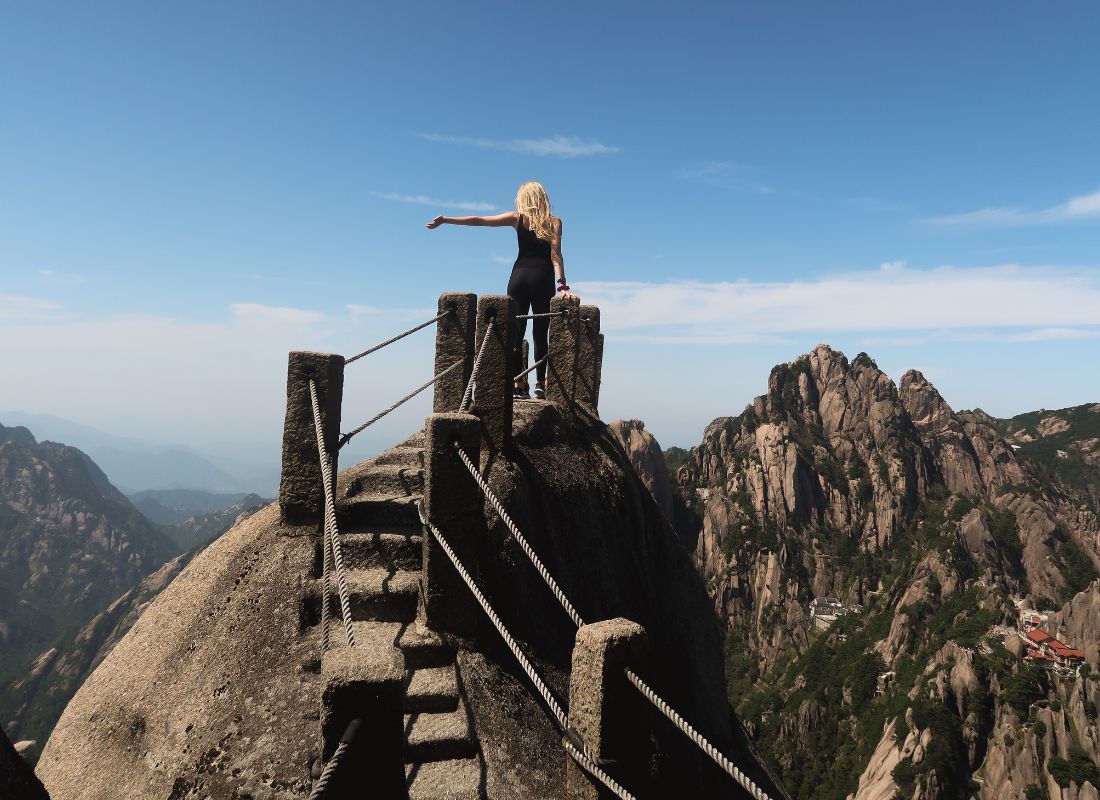
Yellow Mountains (Huangshan)
What is the Best Time to Visit China?
Choosing the best time to visit China depends on your preferred weather, the regions you plan to explore, and the type of activities you want to engage in.
China’s vast size and diverse landscapes result in varied climates throughout the country. Here’s a breakdown of the seasons to help you decide the best time for your visit:
1. Spring (March to May):
- Weather: Spring is generally considered one of the best times to visit many parts of China. The temperatures are mild, ranging from comfortable to warm.
- Flowers and Blooms: Cherry blossoms in cities like Beijing and Shanghai, as well as the peach blossoms in southern areas, add a colorful touch to the landscape.
- Popular Destinations: Ideal for visiting historical and cultural sites, hiking, and enjoying outdoor activities.
2. Summer (June to August):
- Weather: Summer brings warmer temperatures, especially in the southern and central regions. Northern areas can experience hot temperatures.
- Rainy Season: Southern China experiences the monsoon season with frequent rain, while northern regions may face occasional heavy rainfall.
- Popular Destinations: Good for exploring mountainous areas, enjoying outdoor festivals, and visiting northern cities like Beijing.

Summer in Guiling
3. Autumn (September to November):
- Weather: Autumn is characterized by pleasant temperatures and clear skies. Days are often warm, while evenings can be cool.
- Foliage: Many areas, especially in northern China, experience vibrant autumn foliage, making it a picturesque time to visit.
- Popular Destinations: Excellent for hiking, exploring landscapes, and enjoying the more temperate climate in cities.
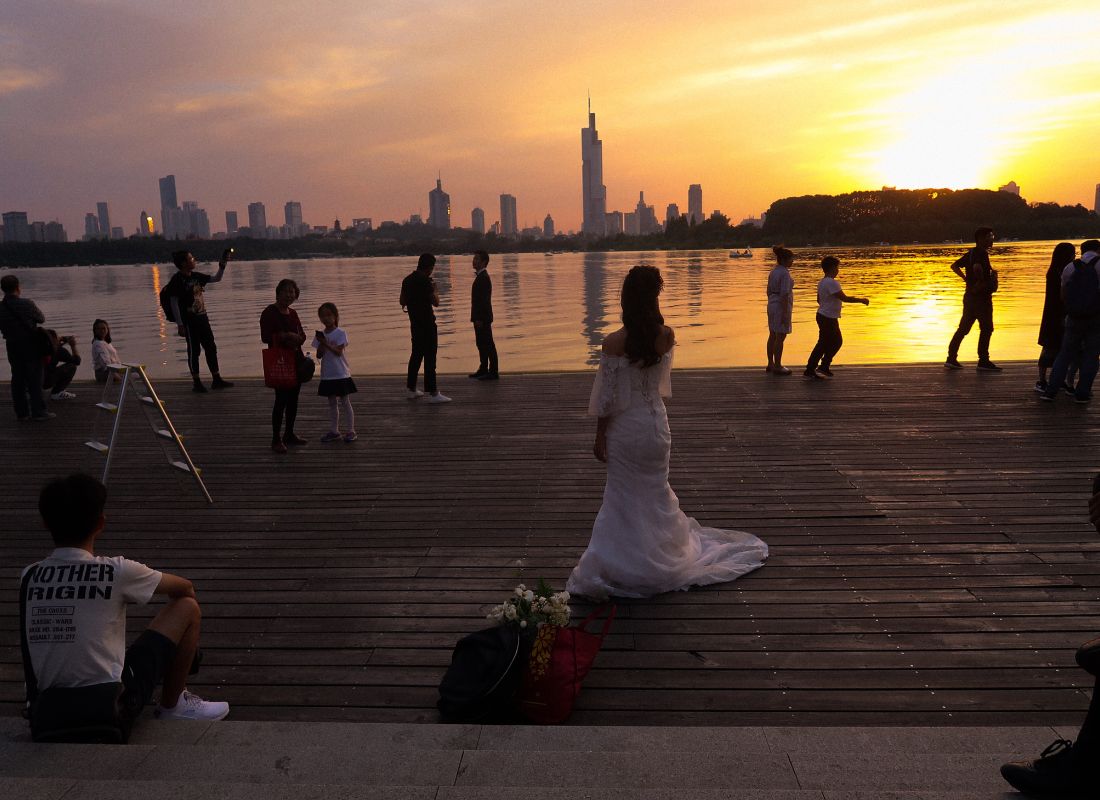
Autumn in Nanjing
4. Winter (December to February):
- Weather: Winters vary across China. Northern areas can be cold, with temperatures dropping below freezing, while southern regions remain milder.
- Snowfall: Northern areas and high-altitude regions may experience snowfall, creating a winter wonderland effect.
- Popular Destinations: Ideal for winter sports enthusiasts in places like Harbin and the northeastern provinces. Southern regions provide a milder winter experience.
5. Special Events:
- Chinese New Year (Spring Festival): Celebrated in late January or early February, it’s a vibrant time but also a peak travel period. Many businesses close during this time.
- National Day Holiday (Golden Week): Occurs during the first week of October, marking China’s National Day. It’s another peak travel period.
Considerations:
- Crowds: Peak travel times, especially during holidays, can lead to crowded tourist attractions and transportation.
- Travel Restrictions: Check for any travel restrictions or considerations related to festivals or national holidays.
- High-altitude Regions: If planning to visit high-altitude regions, be aware of potential temperature extremes and the need for acclimatization.
In summary, spring and autumn are often considered optimal for milder weather and outdoor activities, while winter is suitable for winter sports enthusiasts and those who enjoy a quieter travel experience.
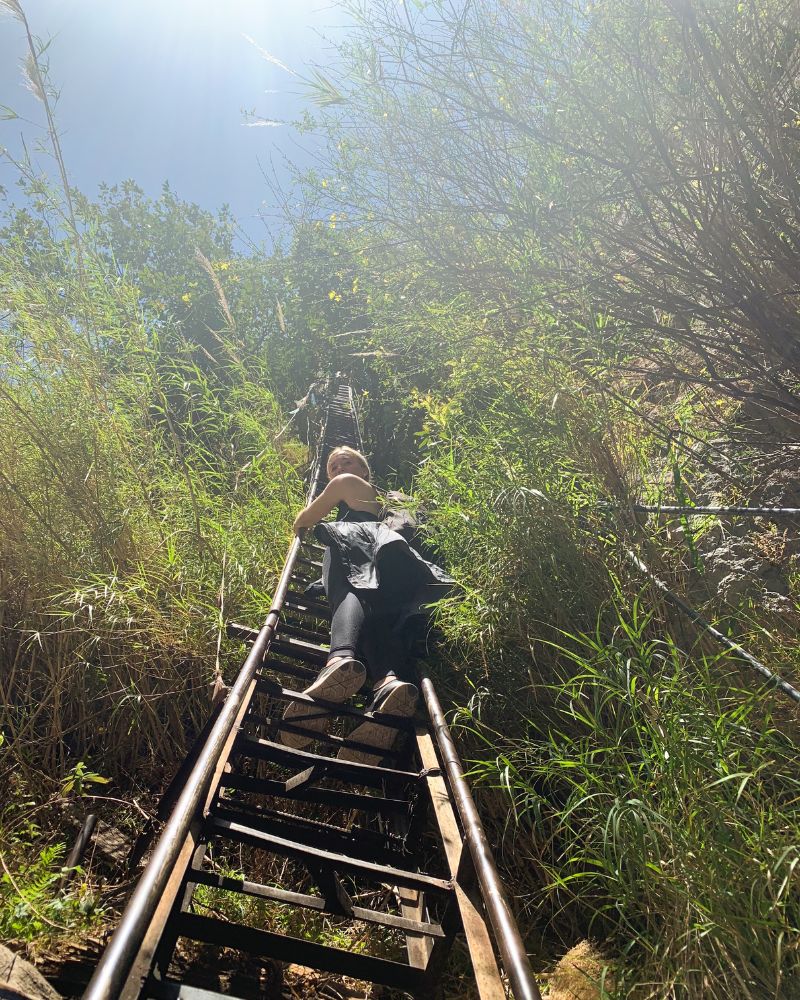
Climbing the Tiger Leaping Gorge!
Closing Thoughts
China is one of my top-five countries. There is truly nowhere like it in the entire world, and you are sure to have an incredible adventure unlike anything you’ve every known.
Happy travels!


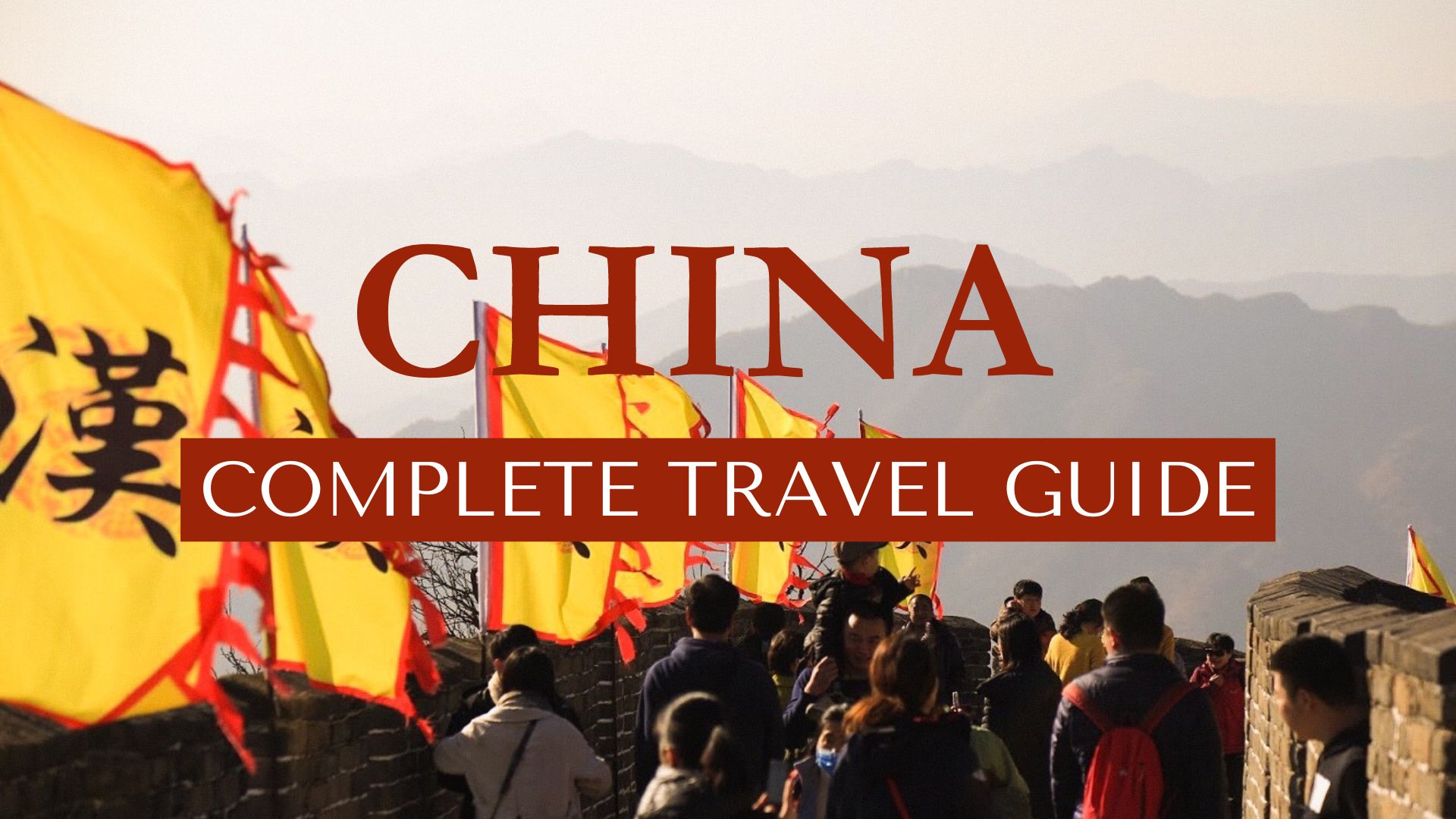
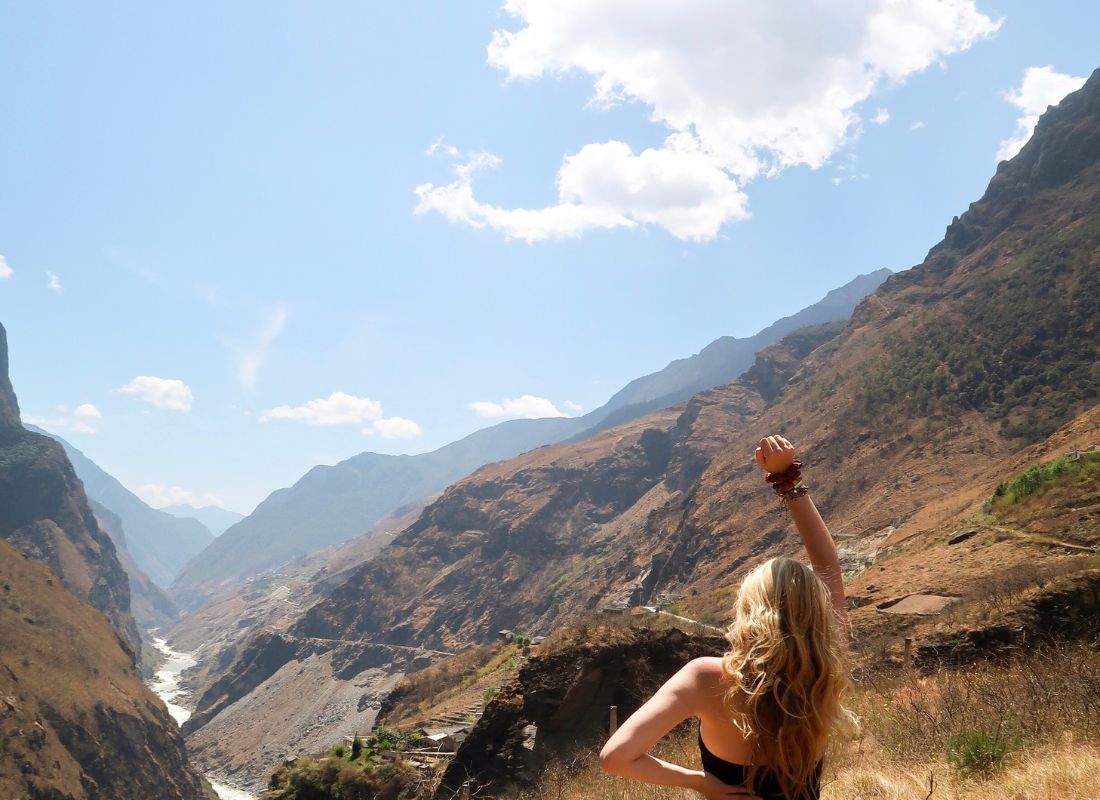


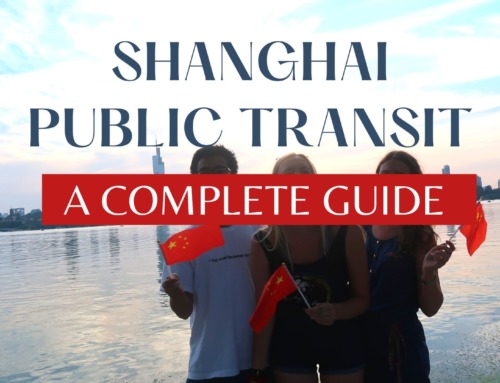




Leave A Comment